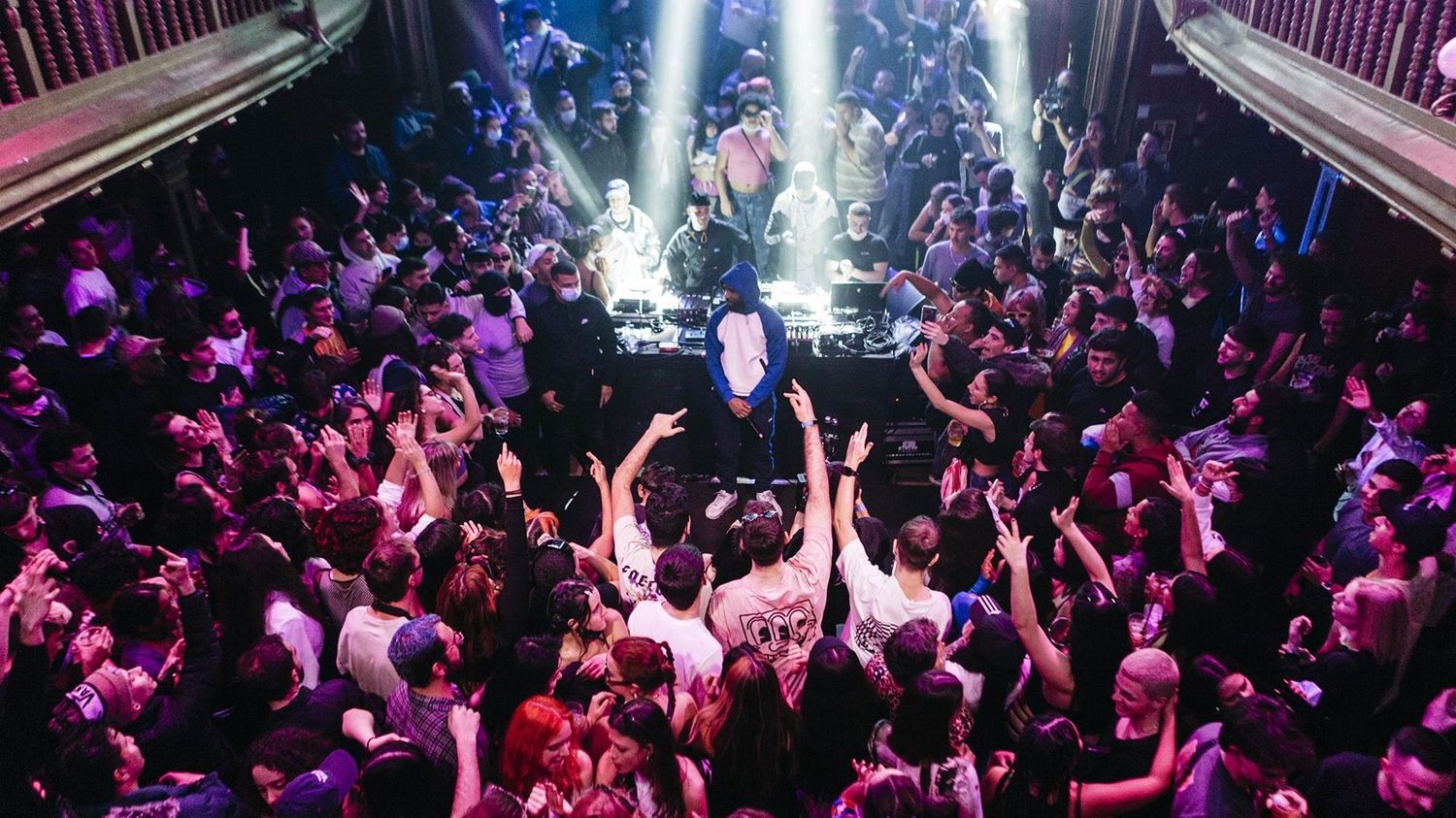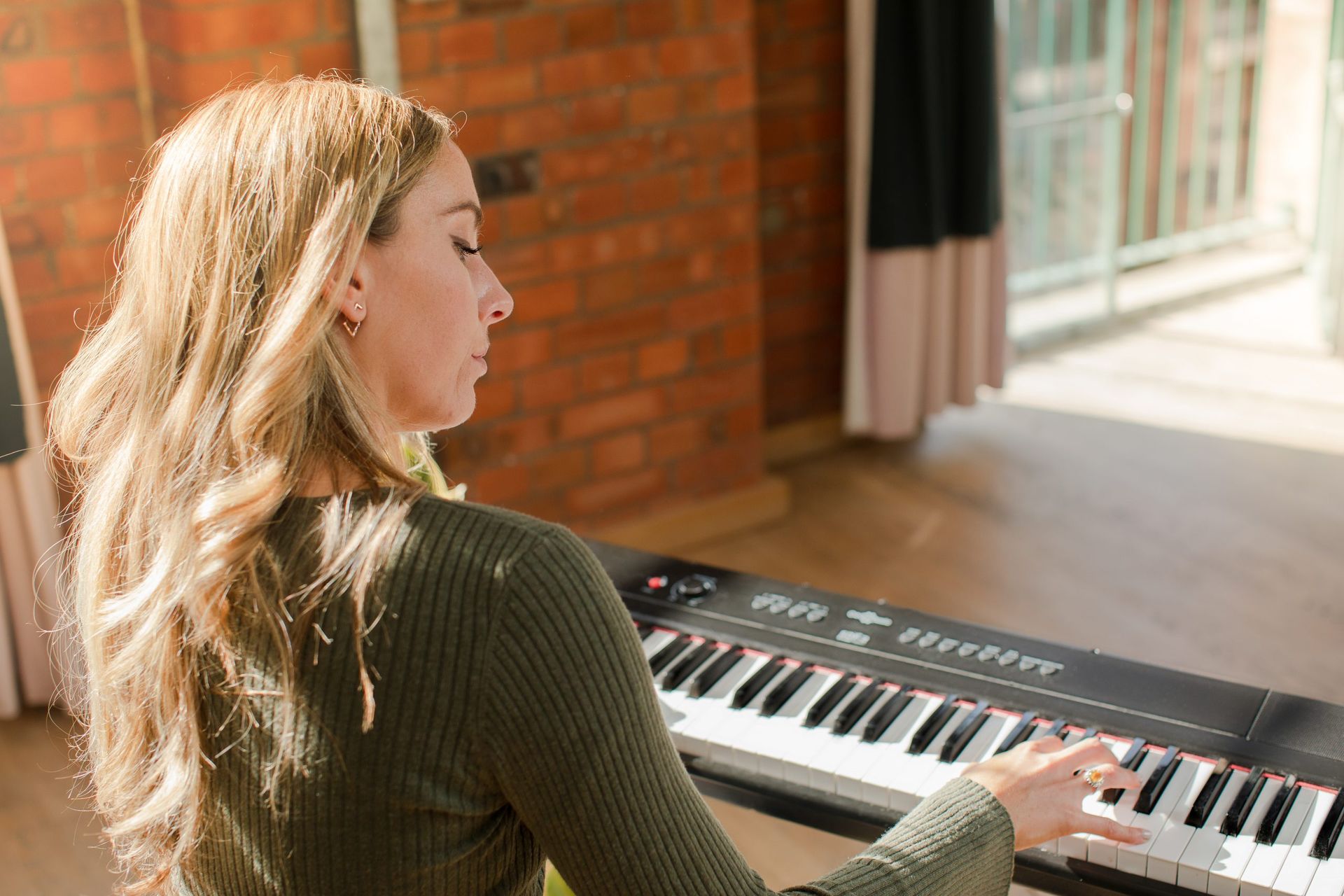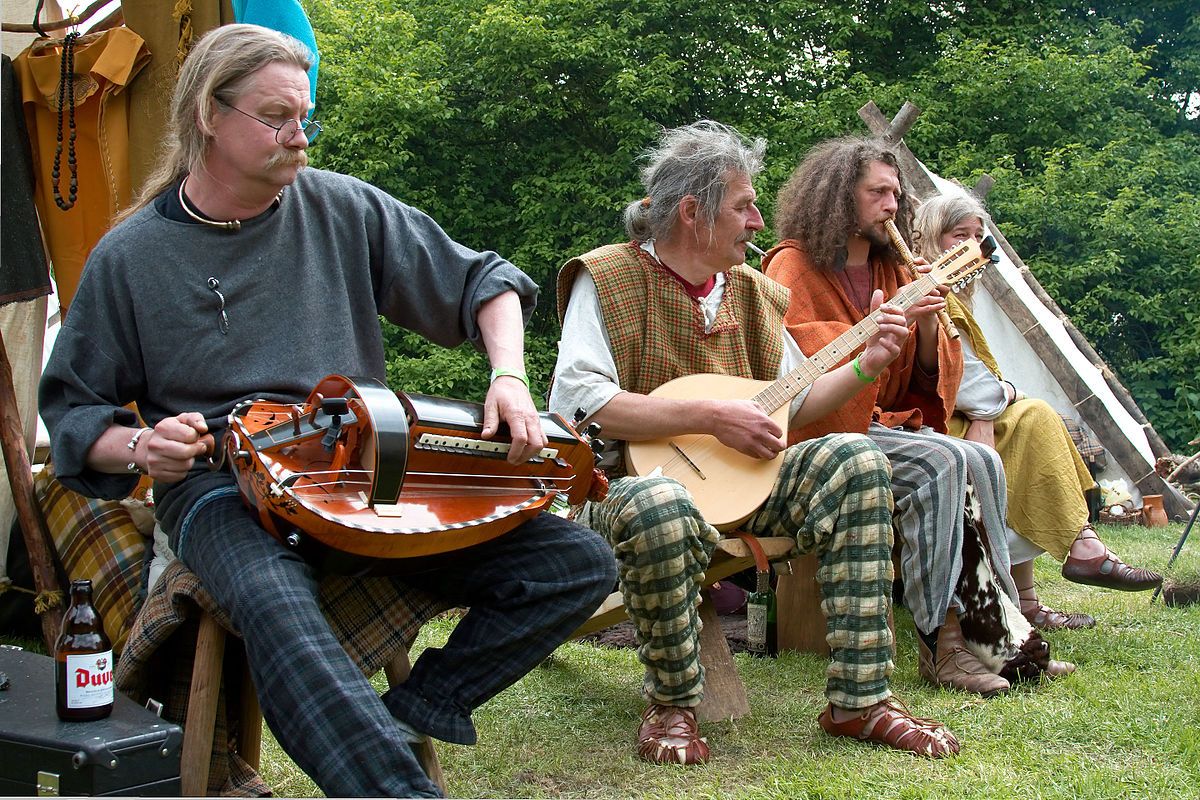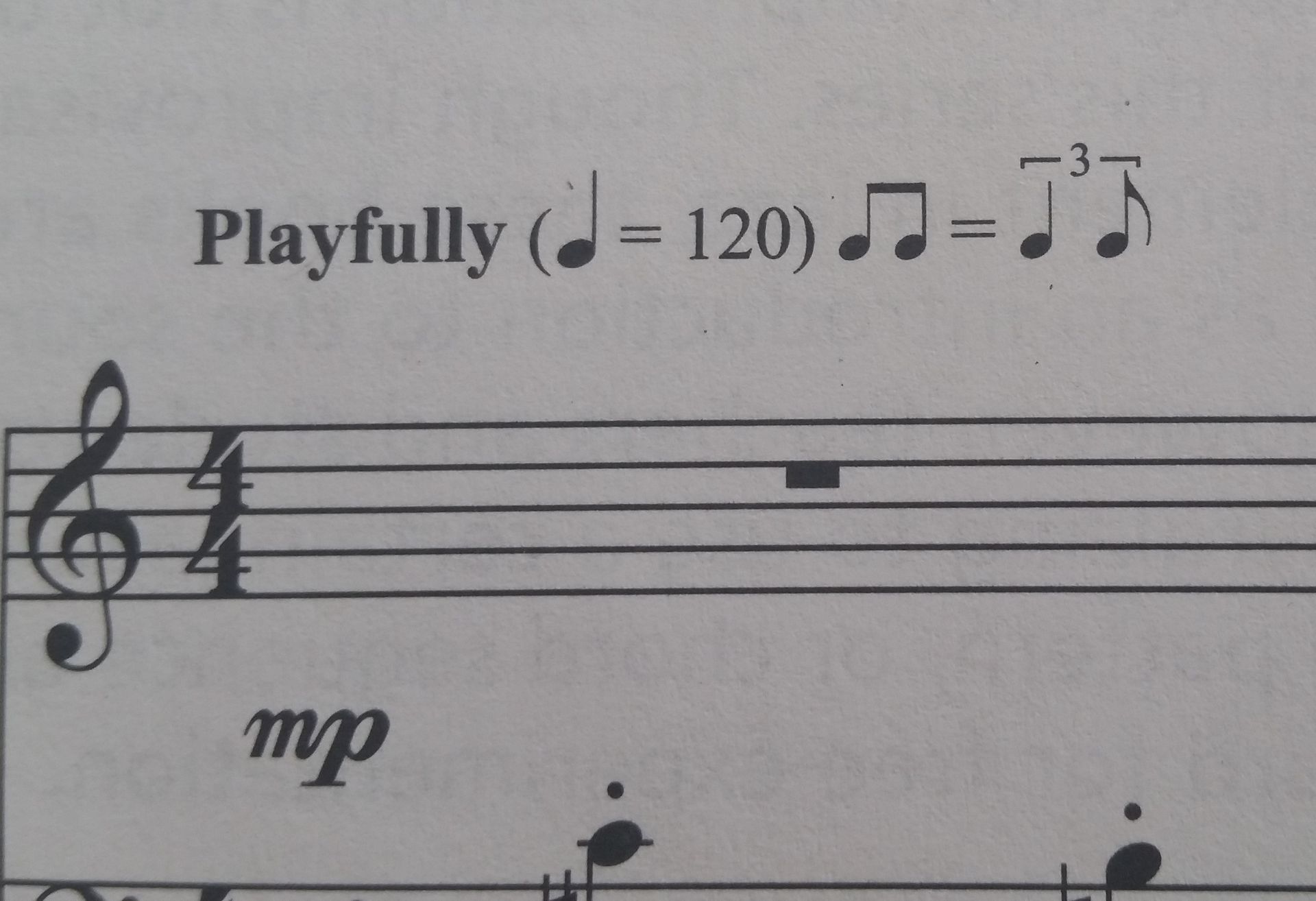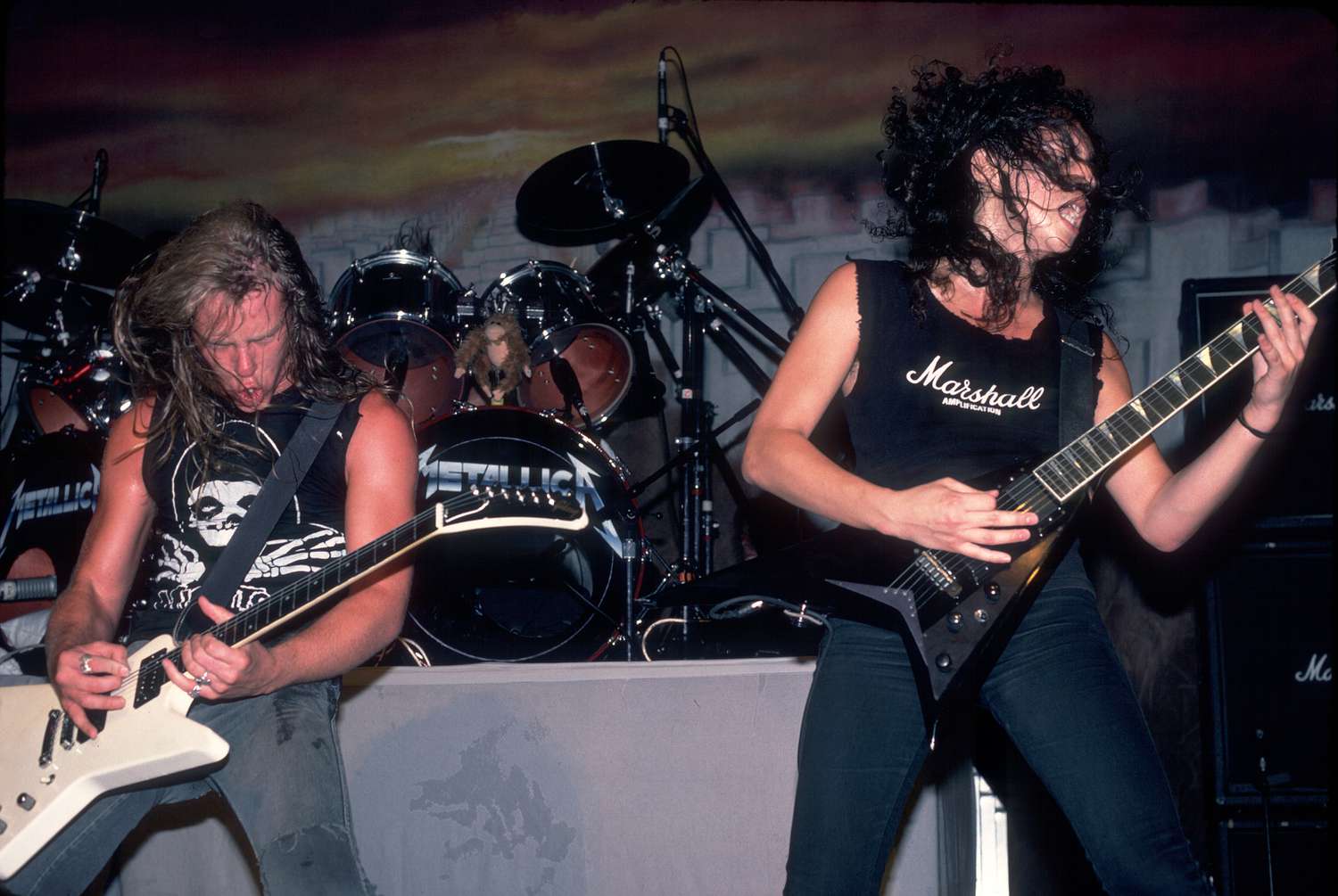Home>Production & Technology>Tempo>What Is The Tempo Of Nigerian Music


Tempo
What Is The Tempo Of Nigerian Music
Modified: February 15, 2024
Discover the varying tempos in Nigerian music, from the energetic beats of Afrobeat to the rhythmic melodies of Highlife. Explore the rich musical heritage of Nigeria and its diverse tempo styles.
(Many of the links in this article redirect to a specific reviewed product. Your purchase of these products through affiliate links helps to generate commission for AudioLover.com, at no extra cost. Learn more)
Table of Contents
Introduction
When it comes to music, Nigeria is a country with a rich and diverse musical heritage. From traditional rhythms to contemporary styles, Nigerian music has captivated audiences around the world. One of the key elements that define Nigerian music is its tempo. Tempo refers to the speed or pace of a musical composition, and it plays a critical role in shaping the overall feel and energy of a song. In this article, we will explore the various tempos that are prominent in Nigerian music and how they contribute to the unique sound of the country’s musical landscape.
Nigeria’s musical scene is heavily influenced by its cultural diversity. With over 250 ethnic groups, each with its own distinct musical traditions, it’s no wonder that Nigerian music is a melting pot of different rhythms, melodies, and tempos. This diversity adds a vibrant and dynamic flavor to the music, making it exceptionally exciting and versatile.
One of the most renowned genres to emerge from Nigeria is Afrobeat, which was pioneered by the legendary Fela Kuti in the 1970s. Afrobeat is characterized by its infectious rhythm and groove, which is often driven by an up-tempo beat. The fast-paced tempo of Afrobeat reflects the energy and intensity of the genre, creating an irresistible urge to dance and move.
Another genre that showcases a distinctive tempo is highlife. Originating in Ghana but gaining popularity in Nigeria during the 1950s, highlife is known for its lively and cheerful melodies. Highlife music typically incorporates elements of Western jazz and African rhythms, creating a fusion that is accompanied by an up-tempo groove. This tempo adds a sense of vitality and joy to highlife music, making it a popular choice for social gatherings and celebrations.
In recent years, Nigerian hip hop has seen a surge in popularity, both locally and internationally. Nigerian hip hop artists have embraced a range of tempos, from slow and mellow beats to fast-paced and energetic rhythms. This versatility allows Nigerian hip hop to explore different styles and moods, catering to a wide variety of musical tastes.
The Influence of Cultural Diversity
Nigeria is a country known for its diverse cultural landscape, with over 250 ethnic groups each bringing their unique musical traditions and styles. This cultural diversity has had a profound influence on the tempo of Nigerian music, contributing to the dynamic and varied rhythms that are characteristic of the country’s musical sound.
The Yoruba people, for example, have their own traditional music called “Apala,” which is characterized by its pulsating tempo and rhythmic patterns. The fast-paced beat of Apala music reflects the energetic and vibrant nature of the Yoruba culture, and it has heavily influenced other genres of Nigerian music, such as Afrobeat and contemporary hip hop.
Similarly, the Igbo people have their own traditional music called “Highlife,” which is known for its lively melodies and up-tempo rhythms. Highlife music is often played at social events and celebrations, creating an atmosphere of joy and excitement. The influence of Igbo highlife can be heard in many genres of Nigerian music, as artists incorporate its lively tempo and energetic groove into their compositions.
The Hausa-Fulani people, on the other hand, have a rich musical tradition called “Gyration,” which is characterized by its fast-paced tempo and rhythmic drumming. Gyration music is often played at cultural festivals and events, where it serves as a means of entertainment and celebration. The influence of Hausa-Fulani gyration can be felt in contemporary Nigerian music, particularly in genres like hip hop and Afrobeat, where the energetic and pulsating tempo adds an infectious energy to the songs.
These are just a few examples of how the cultural diversity of Nigeria has shaped the tempo of its music. Each ethnic group brings its own unique musical traditions, and these traditions blend together to create a vibrant and eclectic musical landscape. The influence of cultural diversity can be seen not only in the tempo of Nigerian music but also in its melodies, rhythms, and lyrical content.
By embracing and celebrating its cultural diversity, Nigerian music has been able to create a sound that is truly unique and captivating. The tempo of Nigerian music reflects the energy, vitality, and diverse traditions of the country, making it a source of pride and joy for Nigerians and music lovers worldwide.
Afrobeat and Its Signature Tempo
Afrobeat is a genre of music that originated in Nigeria in the 1970s, pioneered by the legendary musician Fela Kuti. It is characterized by its fusion of African rhythms and jazz elements, combined with socially conscious lyrics. One of the defining features of Afrobeat is its signature tempo, which is fast-paced and energetic.
The tempo of Afrobeat is often set at a high BPM (beats per minute), ranging from 120 to 140 BPM. This fast-paced tempo creates a sense of urgency and propels the rhythm of the music forward. It is driven by vibrant percussion instruments, such as the conga drums and talking drums, which add layers of intricate rhythms and syncopated beats.
The lively tempo of Afrobeat reflects the energy and vibrancy of Nigerian culture. It encourages movement and dancing, providing an infectious groove that captivates listeners. The up-tempo nature of Afrobeat also contributes to its reputation as a genre that is filled with joy, celebration, and positive energy.
Furthermore, the fast tempo of Afrobeat serves as a platform for powerful lyrical messages. Fela Kuti, known for his activism and political commentary, used the energetic music to express his socio-political views. The fast-paced beats complemented the passionate and outspoken lyrics, bringing a sense of urgency and intensity to the message.
Afrobeat’s signature tempo has influenced numerous musicians and genres not only in Nigeria but also around the world. Artists like Burna Boy, Wizkid, and Davido have incorporated Afrobeat elements into their music, often maintaining the fast-paced tempo characteristic of the genre. This infusion of Afrobeat into contemporary Nigerian music has brought it to a wider audience, solidifying its place as a genre with an enduring impact.
Overall, Afrobeat’s signature tempo is a key element in its distinctive sound. The fast-paced beats, complemented by energetic percussion and powerful lyrics, create a musical experience that is both stimulating and captivating. It is this lively tempo, coupled with the genre’s fusion of African rhythms and jazz influences, that has made Afrobeat a global phenomenon and a proud part of Nigeria’s musical heritage.
Highlife and the Up-tempo Groove
Highlife is a genre of music that originated in Ghana but gained significant popularity in Nigeria during the 1950s and 1960s. It is characterized by its lively melodies, harmonies, and vibrant rhythms. One of the distinguishing features of highlife music is its up-tempo groove, which adds a sense of liveliness and joy to the genre.
The up-tempo groove in highlife music creates an energetic and infectious rhythm that is perfect for dancing and social gatherings. The fast-paced tempo, often ranging from 100 to 120 BPM, drives the music forward and encourages listeners to move their bodies in sync with the beat. The lively nature of highlife’s tempo creates an atmosphere of celebration and brings a sense of positivity and vibrancy to the music.
The up-tempo groove of highlife music is achieved through the skilled use of various instruments, including guitars, horns, and percussion. These instruments work together to create intricate rhythms and syncopated beats that make the music irresistibly catchy. The combination of fast-paced rhythm guitar patterns, melodic horn lines, and polyrhythmic percussion creates a dynamic and pulsating musical experience.
Highlife music and its up-tempo groove have had a significant influence on Nigerian popular music. Many Nigerian artists, both past and present, incorporate elements of highlife into their music. The energetic tempo and infectious groove of highlife can be heard in various genres, from Afrobeat to contemporary Nigerian pop music.
Furthermore, highlife’s up-tempo groove has transcended generations and continues to resonate with listeners today. The nostalgic and lively nature of highlife’s tempo has become synonymous with celebrations and joyful occasions, making it a staple in Nigerian music culture.
Highlife music, with its up-tempo groove, embodies the vibrant spirit of Nigeria. It celebrates life, love, and community, delivering a musical experience that is both captivating and uplifting. Whether it is played at weddings, parties, or cultural festivals, highlife’s fast-paced rhythm and infectious energy are guaranteed to get people on their feet, dancing along with the music.
The Evolution of Nigerian Hip Hop
Nigerian hip hop, also known as Naija hip hop, has experienced a remarkable evolution over the years. Initially influenced by American rap music, Nigerian hip hop has grown into a distinct and vibrant genre that reflects the unique style and experiences of Nigerian artists. One of the notable aspects of this evolution is the varying tempos that can be found within the genre.
In its early days, Nigerian hip hop leaned towards a slower tempo, often adopting the laid-back and chilled-out vibes of West Coast American rap. Artists like Mode 9, Ruggedman, and Eedris Abdulkareem created a style characterized by smooth and introspective beats, allowing for a clear focus on their lyrical prowess and storytelling abilities. This slower tempo had a profound influence on shaping the early sound of Nigerian hip hop.
However, as the genre continued to develop and gain popularity, different tempo variations emerged. Nigerian hip hop artists began experimenting with faster tempos, incorporating elements of Afrobeat, highlife, and other Nigerian musical styles. This evolution allowed for a more energetic and diverse range of sounds within the genre.
Today, Nigerian hip hop encompasses a wide range of tempos, from slow and mellow beats to fast and upbeat rhythms. Artists like Olamide, Phyno, and M.I Abaga have embraced the versatility of Nigerian hip hop and have showcased their ability to flow effortlessly over different tempos, adapting their styles to fit the mood and energy of their tracks.
The evolution of Nigerian hip hop’s tempo is a testament to the genre’s ability to adapt and grow. It reflects the ever-changing musical landscape in Nigeria and the creative versatility of the artists who contribute to the development of the genre. This evolution has allowed Nigerian hip hop to carve out its own unique identity and pave the way for future generations of Nigerian artists to explore and experiment with different tempos and sounds.
As Nigerian hip hop continues to evolve, it remains a powerful platform for self-expression, storytelling, and social commentary. Whether it’s the laid-back vibes of the early days or the energetic tempos of the present, Nigerian hip hop continues to captivate audiences with its infectious beats and captivating lyrics, solidifying its place within the global hip hop landscape.
Dancehall and the Pulsating Rhythm
Dancehall, a genre originating from Jamaica, has made a significant impact on the Nigerian music scene. Known for its energetic beats and catchy melodies, dancehall has gained a loyal following in the country. One of the notable characteristics of dancehall is its pulsating rhythm, which gets people moving and grooving on the dance floor.
The tempo of dancehall music is typically fast-paced, ranging from 90 to 100 BPM or even higher. This up-tempo rhythm creates a pulsating beat that drives the music forward and sets the stage for energetic dance moves. The combination of drum patterns, basslines, and vocal deliveries creates an infectious groove that is irresistible to listeners.
Nigerian artists have embraced dancehall and incorporated its pulsating rhythm into their music. Artists like Patoranking, Burna Boy, and Timaya have successfully merged elements of dancehall with Nigerian sounds, creating a unique fusion that appeals to a wide audience. The pulsating rhythm gives their songs a vibrant and dynamic quality, elevating the overall energy and impact of the music.
Dancehall’s pulsating rhythm goes beyond just the music itself; it has also influenced the dance styles associated with the genre. Nigerian dancehall enthusiasts have developed their own unique dance moves, characterized by their fast-paced and energetic nature. These dance movements are in sync with the rhythm of the music, creating an immersive and captivating visual experience.
The pulsating rhythm of dancehall has also influenced other genres of Nigerian music. Afrobeats, for example, often incorporates elements of dancehall into its sound, creating a fusion that appeals to both local and international audiences. The combination of the pulsating rhythm and infectious melodies has played a crucial role in the popularity and global reach of Nigerian music.
Overall, dancehall’s pulsating rhythm has become a driving force in Nigerian music, adding a burst of energy and excitement to the songs. The fast-paced tempo, combined with catchy melodies and infectious beats, creates a musical experience that is both uplifting and exhilarating. Whether it’s on the dancefloor or through the speakers, the pulsating rhythm of dancehall continues to captivate listeners and keep them moving to the groove.
The Role of Gospel Music
Gospel music holds a significant place within the Nigerian music landscape. Rooted in religious faith, gospel music serves as a source of inspiration, hope, and spiritual upliftment for individuals and communities. One of its distinctive features is the diversity of tempos that can be found within the genre.
Gospel music encompasses a wide range of tempos, from slow and meditative ballads to upbeat and energetic songs of praise. The slower tempo often accompanies heartfelt and introspective lyrics, allowing listeners to reflect and connect with the message of the song on a deeper level. This slower tempo creates an atmosphere of worship, inviting individuals to enter into a state of contemplation and spiritual communion.
On the other hand, gospel music also embraces faster tempos, especially in the sub-genres of gospel rock, gospel hip hop, and gospel reggae. These up-tempo tracks infuse elements of contemporary styles into gospel music, combining celebratory beats with powerful vocals and uplifting lyrics. The faster tempo adds a sense of joy and exuberance, encouraging listeners to engage in energetic praise and worship.
The role of gospel music goes beyond entertainment; it serves as a means of expressing devotion, faith, and personal experiences. Gospel artists use the varying tempos to convey different emotions and messages, providing listeners with a diverse range of musical expressions that resonate with their spiritual journeys.
Gospel music also plays a crucial role in community building and fostering unity. Churches and religious gatherings often utilize gospel music as a tool for worship and fellowship. The tempo of gospel music, regardless of whether it’s slow or fast, creates a sense of togetherness and shared experience, facilitating a collective expression of faith and belief.
Furthermore, gospel music has not only influenced the Nigerian music scene but also transcended borders and gained international recognition. Nigerian gospel artists like Sinach, Frank Edwards, and Nathaniel Bassey have garnered a global following, spreading their uplifting music and spiritual messages around the world.
In summary, gospel music in Nigeria embraces a range of tempos, from slow and contemplative to fast-paced and exuberant. The varying tempos contribute to the depth and diversity of gospel music, allowing it to connect with a wide audience and provide a source of spiritual comfort and inspiration. Whether it’s the soothing melodies or the energetic beats, gospel music continues to play a significant role in uplifting hearts and touching souls.
Traditional Nigerian Music and Its Rhythmic Patterns
Traditional Nigerian music is deeply rooted in the country’s diverse ethnic and cultural heritage. It encompasses a wide range of styles and rhythms, each unique to the specific region or ethnic group from which it originates. The rhythmic patterns found in traditional Nigerian music are a key element in creating the captivating and vibrant soundscape of these traditional musical forms.
One of the fundamental aspects of traditional Nigerian music is its intricate rhythmic patterns. These patterns are often created using a combination of traditional percussion instruments such as drums, talking drums, and xylophones. The rhythmic patterns are meticulously crafted, reflecting the artistic expressions and cultural traditions of the particular ethnic group.
For instance, the Yoruba people of southwestern Nigeria have a rich musical heritage, with rhythms that are deeply embedded in their everyday life and cultural practices. Traditional Yoruba music, heavily influenced by drumming and dance, features complex rhythmic patterns that are synchronized with various ceremonial and social activities. These rhythmic patterns not only provide a musical backdrop but also serve as a means of communication and expression within the community.
In contrast, the Igbo people of southeastern Nigeria have their own distinct rhythmic patterns in their traditional music. Igbo music incorporates a wide array of instruments, including the udù (a clay pot drum), ogene (a metal gong), and ikoro (a wooden slit drum). The rhythmic patterns in Igbo music showcase polyrhythms and intricate syncopation, creating a multi-layered and dynamic sound.
The Hausa-Fulani people in northern Nigeria also have their own traditional music with unique rhythmic patterns. Characterized by the use of percussion instruments such as the kalangu (talking drum) and the goje (a one-stringed fiddle), traditional Hausa-Fulani music often features repetitive rhythmic patterns that create a trance-like effect, encouraging listeners to immerse themselves in the music.
These are just a few examples of the diversity of rhythmic patterns found in traditional Nigerian music. Each ethnic group and region contribute their own unique flavors and styles, making Nigerian traditional music a rich tapestry of rhythmic expressions. The different rhythms are not only used for entertainment but also serve as a way of preserving cultural heritage, telling stories, and passing down historical narratives from one generation to the next.
Today, traditional Nigerian music continues to thrive, both in its pure form and in fusion with contemporary genres. The rhythmic patterns of traditional Nigerian music play a significant role in shaping the country’s musical landscape, influencing genres like Afrobeat, highlife, and even contemporary Nigerian pop music. The rhythmic richness of traditional Nigerian music adds depth, texture, and authenticity to Nigeria’s vibrant and ever-evolving musical scene.
The Fusion of Genres
In the ever-evolving landscape of Nigerian music, genre fusion plays a pivotal role in creating exciting and innovative sounds. The fusion of different musical genres brings together diverse influences and styles, resulting in a rich and eclectic musical tapestry. This fusion adds a unique flavor to Nigerian music, showcasing the versatility and adaptability of Nigerian artists.
One of the prominent examples of genre fusion in Nigerian music is Afrofusion. Afrofusion blends elements of Afrobeat, Afrobeats, highlife, hip hop, reggae, and other genres to create a distinct sound that appeals to a wide range of listeners. Artists like Burna Boy, Wizkid, and Davido have successfully fused these genres, infusing their music with a cross-cultural essence while maintaining a distinctly Nigerian sound.
Another popular fusion is the incorporation of traditional Nigerian music with contemporary genres. Artists like Asa, Bez, and Brymo have successfully blended traditional folk sounds with soul, jazz, and R&B, resulting in a unique sound that pays homage to their Nigerian roots while embracing global influences.
Furthermore, the fusion of Nigerian music with international genres has gained popularity. Artists collaborate with international artists and producers, bringing together Nigerian sounds with genres such as hip hop, pop, EDM, and dancehall. These collaborations not only showcase the global reach of Nigerian music but also result in dynamic tracks that appeal to a diverse audience.
The fusion of genres in Nigerian music allows for experimentation and innovation. It breaks down musical boundaries, fostering creativity and pushing the limits of what is possible in terms of sound and style. Additionally, genre fusion provides a platform for artists to express their unique identities, showcasing their versatility as they navigate different musical landscapes.
Moreover, genre fusion in Nigerian music contributes to its global recognition and prominence. The ability to blend different genres allows Nigerian artists to connect with audiences worldwide, transcending cultural and regional boundaries. This fusion helps to create a universal appeal that resonates with listeners from all corners of the globe.
The fusion of genres in Nigerian music is indeed a testament to the country’s rich musical heritage and its ability to adapt and evolve. It reflects the openness of Nigerian artists to explore new musical territories and create unique sounds. As genre boundaries continue to blur, we can expect even more exciting and innovative genre fusions to emerge from Nigeria’s vibrant music scene.
Conclusion
Nigerian music is a melting pot of diverse sounds, rhythms, and genres. The tempo of Nigerian music plays a crucial role in shaping its overall feel and energy. From the fast-paced tempo of Afrobeat and highlife to the pulsating rhythm of dancehall and the versatile tempos of Nigerian hip hop, there is a wide range of musical expressions that captivate audiences both locally and internationally.
The influence of cultural diversity enriches Nigerian music with a variety of rhythmic patterns and styles. Drawing inspiration from traditional Nigerian music, gospel music, and the fusion of genres, Nigerian artists have created a musical landscape that is vibrant, dynamic, and distinctive.
The tempo of Nigerian music reflects the spirit and energy of the country’s diverse ethnic groups, showcasing their rich musical traditions. Whether it’s the intricate rhythmic patterns of traditional Nigerian music or the fusion of genres that push creative boundaries, the tempo adds depth, excitement, and a sense of connection between the music and its listeners.
As Nigerian music continues to evolve and shape the global music industry, the tempo remains a constant force that drives the songs forward. It is an essential element that evokes emotions, encourages movement, and serves as a means of self-expression and cultural preservation.
In conclusion, the tempo of Nigerian music is a vibrant and integral part of its identity. It brings together the traditional and the contemporary, the cultural and the global, creating a rich and diverse musical experience. Whether it’s the fast-paced beats of Afrobeat, the up-tempo groove of highlife, the pulsating rhythm of dancehall, the evolving tempo of Nigerian hip hop, the soulful melodies of gospel music, or the fusion of genres, the tempo of Nigerian music continues to captivate and inspire audiences worldwide.

